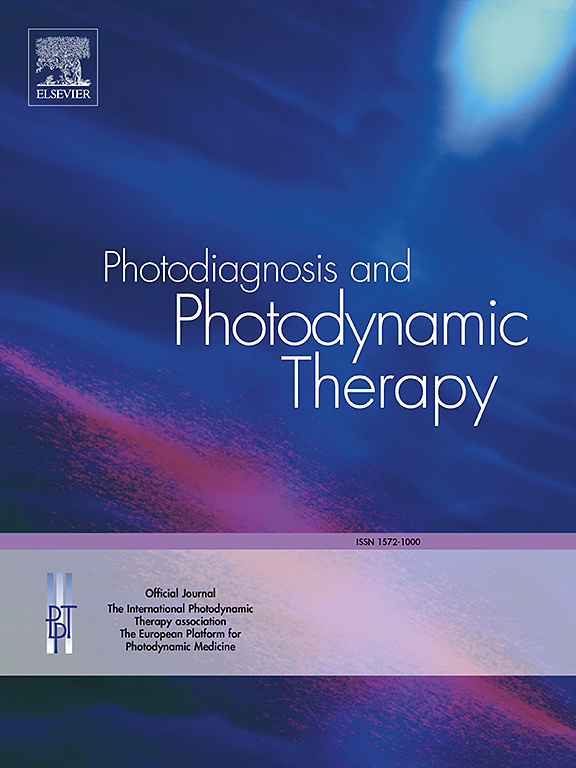Cone mosaic in eyes with varied axial length using adaptive optics scanning laser ophthalmoscopy
IF 3.1
3区 医学
Q2 ONCOLOGY
引用次数: 0
Abstract
Background
Abnormalities in cone photoreceptor topography are closely associated with the development of various ocular diseases, including axial myopia. Adaptive Optics Scanning Laser Ophthalmoscopy (AOSLO) enables high-resolution, single-cell imaging of the living human retina.
Methods
This study aimed to investigate the potential relationship between cone topography and axial myopia using a commercial AOSLO system. A total of 74 participants (148 eyes; 30 men, 40.5 %) with a mean age of 31.8 ± 10.4 years were included. Cone mosaics were imaged at 3° and 5° eccentricities of the fovea centralis. The relationships between cone parameters (linear cone density, cone spacing, cone dispersion, and cone regularity) and axial length were analyzed.
Results
Linear cone density significantly decreased with increasing axial length at both 3° and 5° eccentricities (all P < 0.001). Cone spacing significantly increased with greater axial length and reduced cone density. After adjusting for axial length, cone spacing was significantly associated only with linear cone density at both 3° and 5° eccentricities (all P < 0.001). Cone dispersion significantly increased with longer axial length and lower cone density. After adjusting for axial length, cone dispersion remained significantly associated with linear cone density only at the inferior 3° (β = -0.43, P = 0.014) and inferior 5° eccentricities (β=-0.4, P = 0.003). Cone regularity significantly increased with higher linear cone density at certain 3° eccentricities (nasal: β=0.34, P < 0.001; temporal: β=0.25, P = 0.006; inferior: β = 0.2, P = 0.04) and significantly decreased with longer axial length at temporal 5° eccentricity (β = -0.57, P < 0.001).
Conclusions
Linear cone density was significantly reduced in axial myopia. The uniformity of cone distribution was disrupted as a result of the reduction in cone density. Additionally, cone regularity was significantly diminished in axial myopia, potentially due to the direct effects of axial elongation at 5° eccentricity or reductions in cone density at 3° eccentricity.
应用自适应光学扫描激光检眼镜观察不同眼轴长度的视锥镶嵌。
背景:视锥光感受器地形异常与包括轴型近视在内的多种眼部疾病的发生密切相关。自适应光学扫描激光检眼镜(AOSLO)能够实现活体人类视网膜的高分辨率单细胞成像。方法:利用商用AOSLO系统研究视锥地形与轴性近视的关系。共有74名参与者(148只眼睛;男性30例(40.5%),平均年龄31.8±10.4岁。锥体镶嵌在中央凹的3°和5°偏心位置成像。分析了锥体参数(直线锥体密度、锥体间距、锥体色散和锥体规整度)与轴向长度之间的关系。结果:轴向偏心率为3°和5°时,线锥密度随轴向长度的增加而显著降低(均P < 0.001)。随着轴向长度的增大和锥密度的减小,锥间距显著增加。在调整轴向长度后,锥体间距仅与3°和5°偏心率时的线性锥体密度显著相关(均P < 0.001)。随着轴长和锥密度的增大,锥弥散度显著增加。在调整轴向长度后,锥体弥散度与线性锥体密度的相关性仅在低3°(β = -0.43,P = 0.014)和低5°偏心(β=-0.4, P=0.003)处保持显著。在一定的3°偏心率下,随着线锥密度的增加,锥体规整度明显增加(鼻:β=0.34, p)。由于锥体密度的降低,破坏了锥体分布的均匀性。此外,轴向近视的视锥规则性明显减弱,这可能是由于轴向偏心距为5°或偏心距为3°时视锥密度降低的直接影响。
本文章由计算机程序翻译,如有差异,请以英文原文为准。
求助全文
约1分钟内获得全文
求助全文
来源期刊

Photodiagnosis and Photodynamic Therapy
ONCOLOGY-
CiteScore
5.80
自引率
24.20%
发文量
509
审稿时长
50 days
期刊介绍:
Photodiagnosis and Photodynamic Therapy is an international journal for the dissemination of scientific knowledge and clinical developments of Photodiagnosis and Photodynamic Therapy in all medical specialties. The journal publishes original articles, review articles, case presentations, "how-to-do-it" articles, Letters to the Editor, short communications and relevant images with short descriptions. All submitted material is subject to a strict peer-review process.
 求助内容:
求助内容: 应助结果提醒方式:
应助结果提醒方式:


